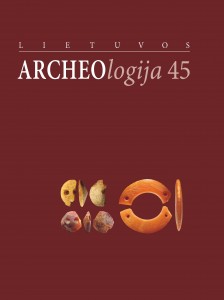BRONZE CASTING AND COMMUNICATION IN THE SOUTHEASTERN BALTIC BRONZE AGE
BRONZE CASTING AND COMMUNICATION IN THE SOUTHEASTERN BALTIC BRONZE AGE
Author(s): Agnė Čivilytė, Vytenis PodėnasSubject(s): Archaeology, Geography, Regional studies, Communication studies, Ancient World
Published by: Lietuvos istorijos institutas
Keywords: bronze casting; communication networks; exchange; Southeastern Baltic; Bronze Age;
Summary/Abstract: The SE Baltic Bronze Age is characterized by a lack of indigenous metalwork traditions as it had been a time when metal finds were predominantly imported or were cast locally, but in foreign styles. This paper analyses the bronze casting remains found in the SE Baltic and discusses the role of these production sites within a wider European network. Through typological identification of the negatives in casting moulds, we assess predominantly Nordic artefact casts, in which the production of KAM (Kel’ty Akozinsko-Melarskie) axes was distinguished at a higher frequency. We hypothesize that several coastal regions were temporarily settled by people of Nordic origin who participated in an exchange with local SE Baltic communities via itinerant bronze production. Foreign settlement areas as indicated by stone ship burials are known in Courland and S Saaremaa as well as in N Estonia and the Sambian Peninsula. From these territories, further communication was developed with local communities settled mostly in enclosed sites in coastal areas and inland, in the vicinity of the River Daugava, the SE Latvian and NE Lithuanian uplands, and the Masurian Lakeland.
Journal: Lietuvos archeologija
- Issue Year: 2019
- Issue No: 45
- Page Range: 169-199
- Page Count: 31
- Language: English

